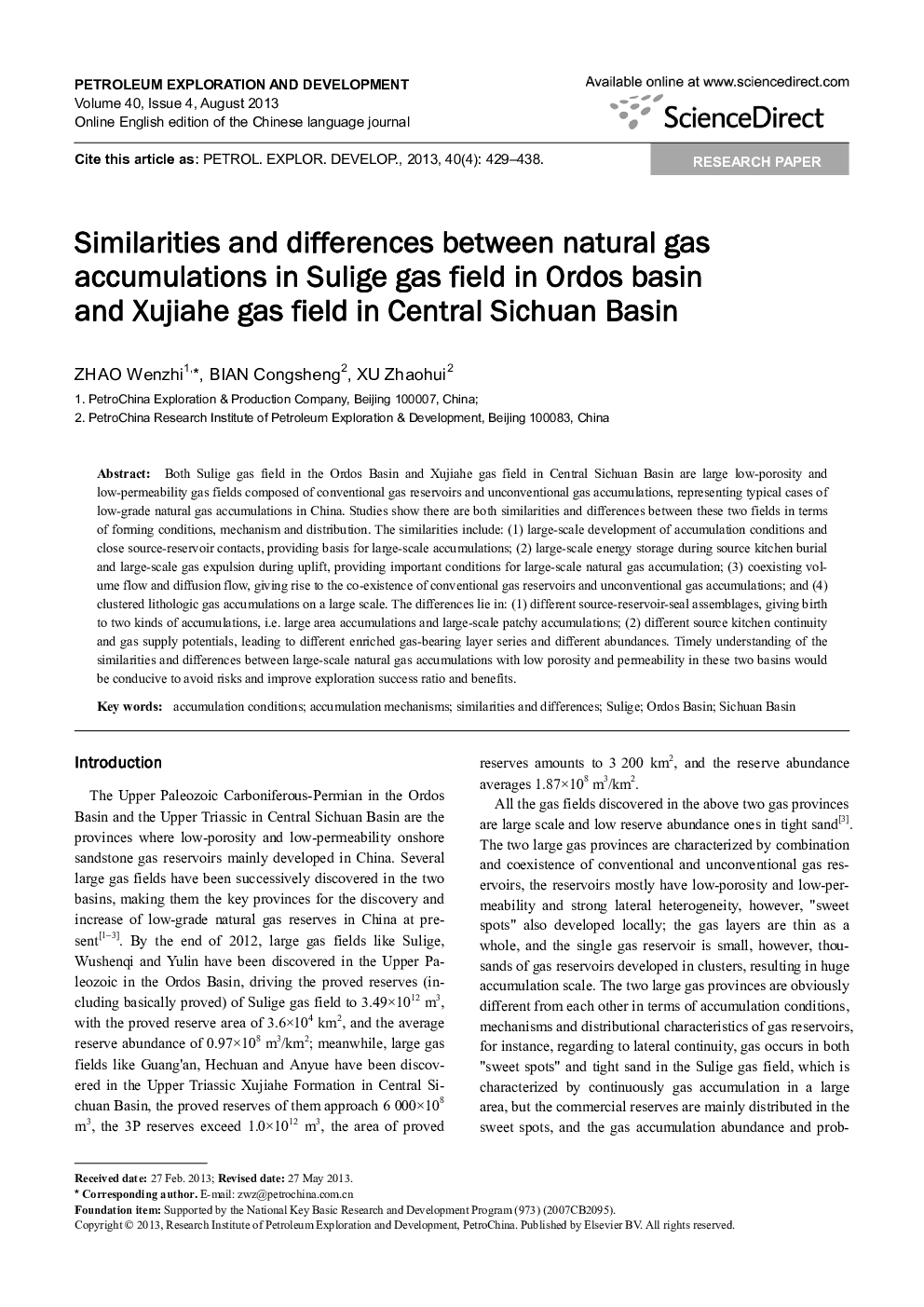| کد مقاله | کد نشریه | سال انتشار | مقاله انگلیسی | نسخه تمام متن |
|---|---|---|---|---|
| 4720339 | 1355326 | 2013 | 10 صفحه PDF | دانلود رایگان |
Both Sulige gas field in the Ordos Basin and Xujiahe gas field in Central Sichuan Basin are large low-porosity and low-permeability gas fields composed of conventional gas reservoirs and unconventional gas accumulations, representing typical cases of low-grade natural gas accumulations in China. Studies show there are both similarities and differences between these two fields in terms of forming conditions, mechanism and distribution. The similarities include: (1) large-scale development of accumulation conditions and close source-reservoir contacts, providing basis for large-scale accumulations; (2) large-scale energy storage during source kitchen burial and large-scale gas expulsion during uplift, providing important conditions for large-scale natural gas accumulation; (3) coexisting volume flow and diffusion flow, giving rise to the co-existence of conventional gas reservoirs and unconventional gas accumulations; and (4) clustered lithologic gas accumulations on a large scale. The differences lie in: (1) different source-reservoir-seal assemblages, giving birth to two kinds of accumulations, i.e. large area accumulations and large-scale patchy accumulations; (2) different source kitchen continuity and gas supply potentials, leading to different enriched gas-bearing layer series and different abundances. Timely understanding of the similarities and differences between large-scale natural gas accumulations with low porosity and permeability in these two basins would be conducive to avoid risks and improve exploration success ratio and benefits.
Journal: Petroleum Exploration and Development - Volume 40, Issue 4, August 2013, Pages 429-438
